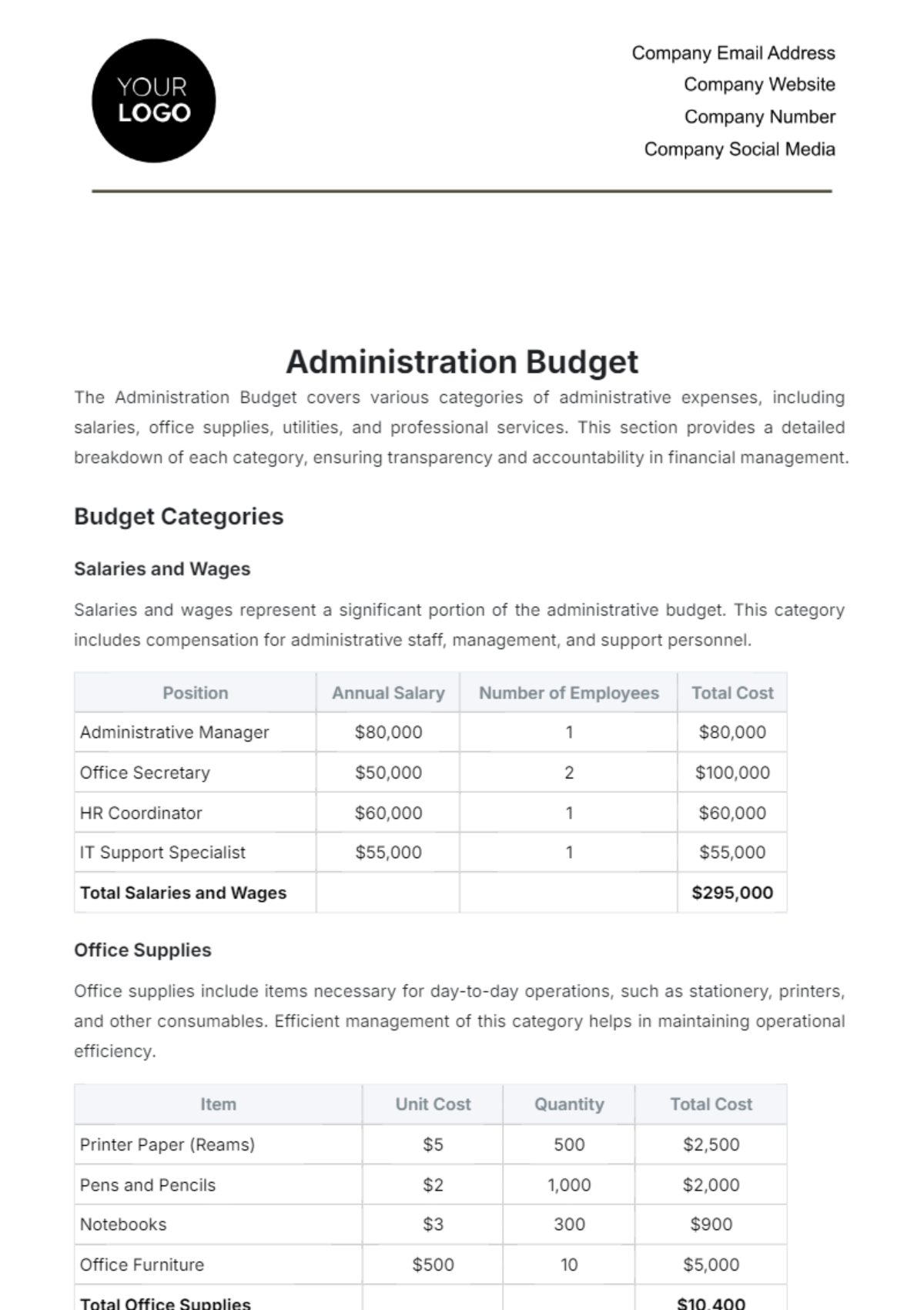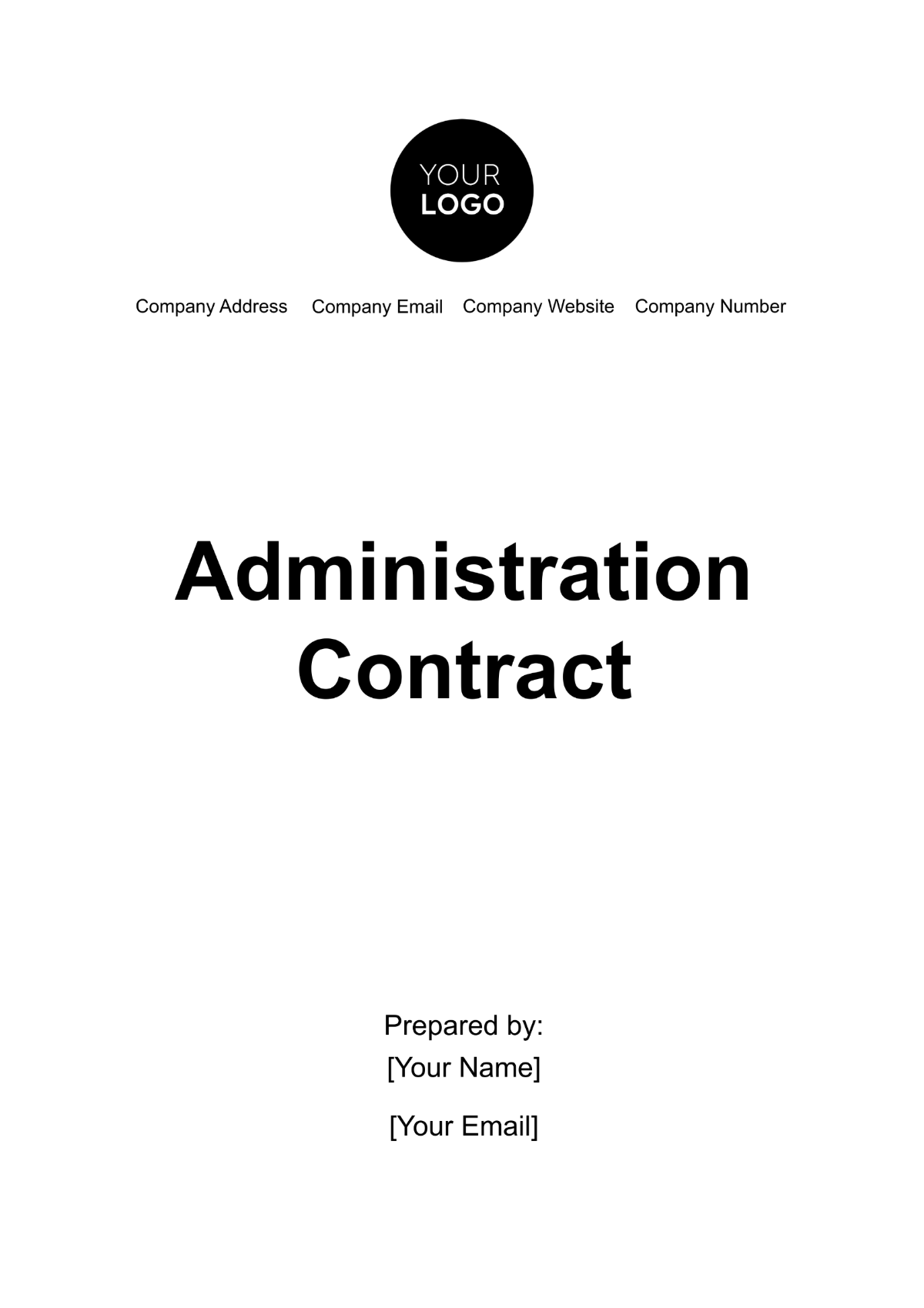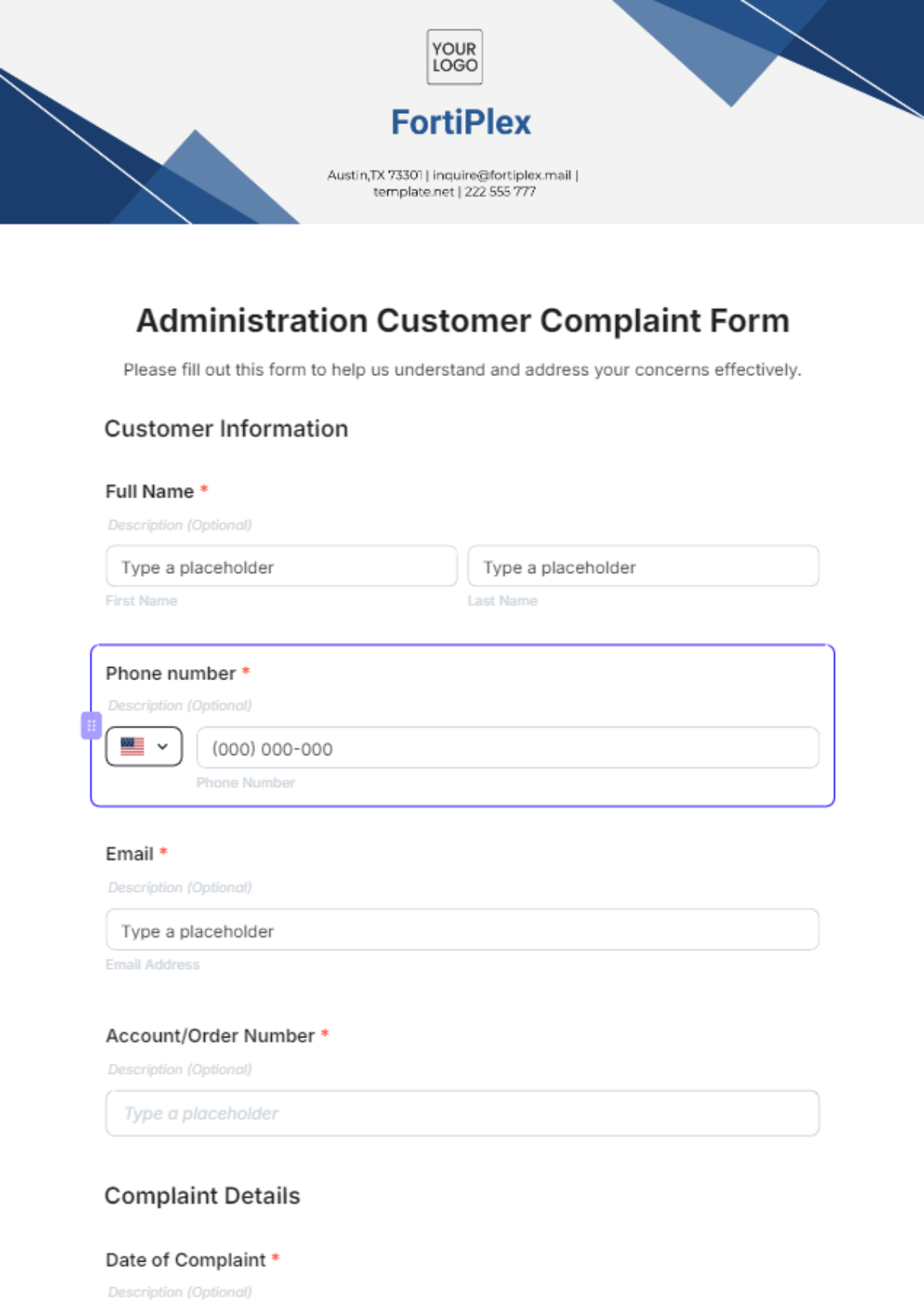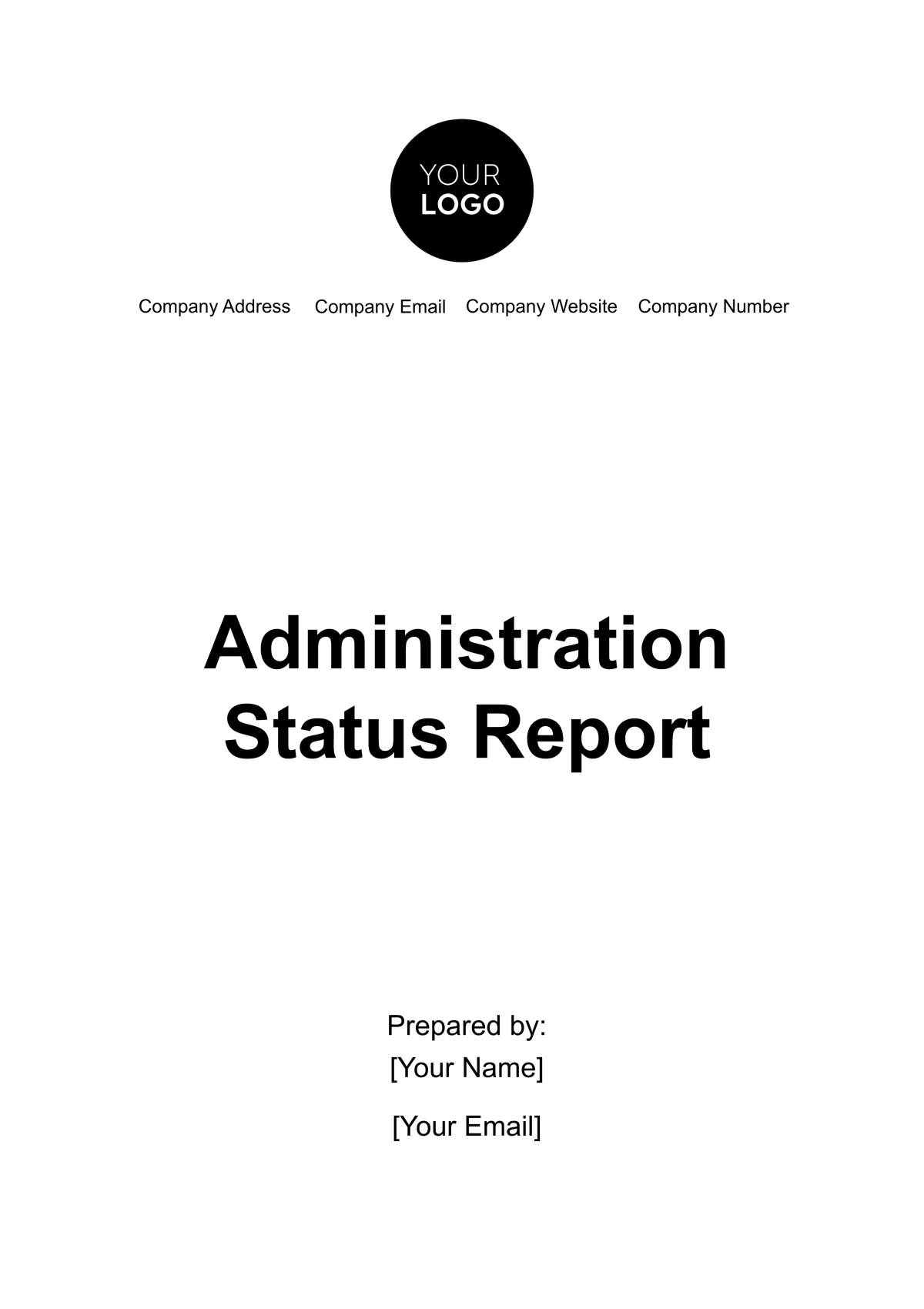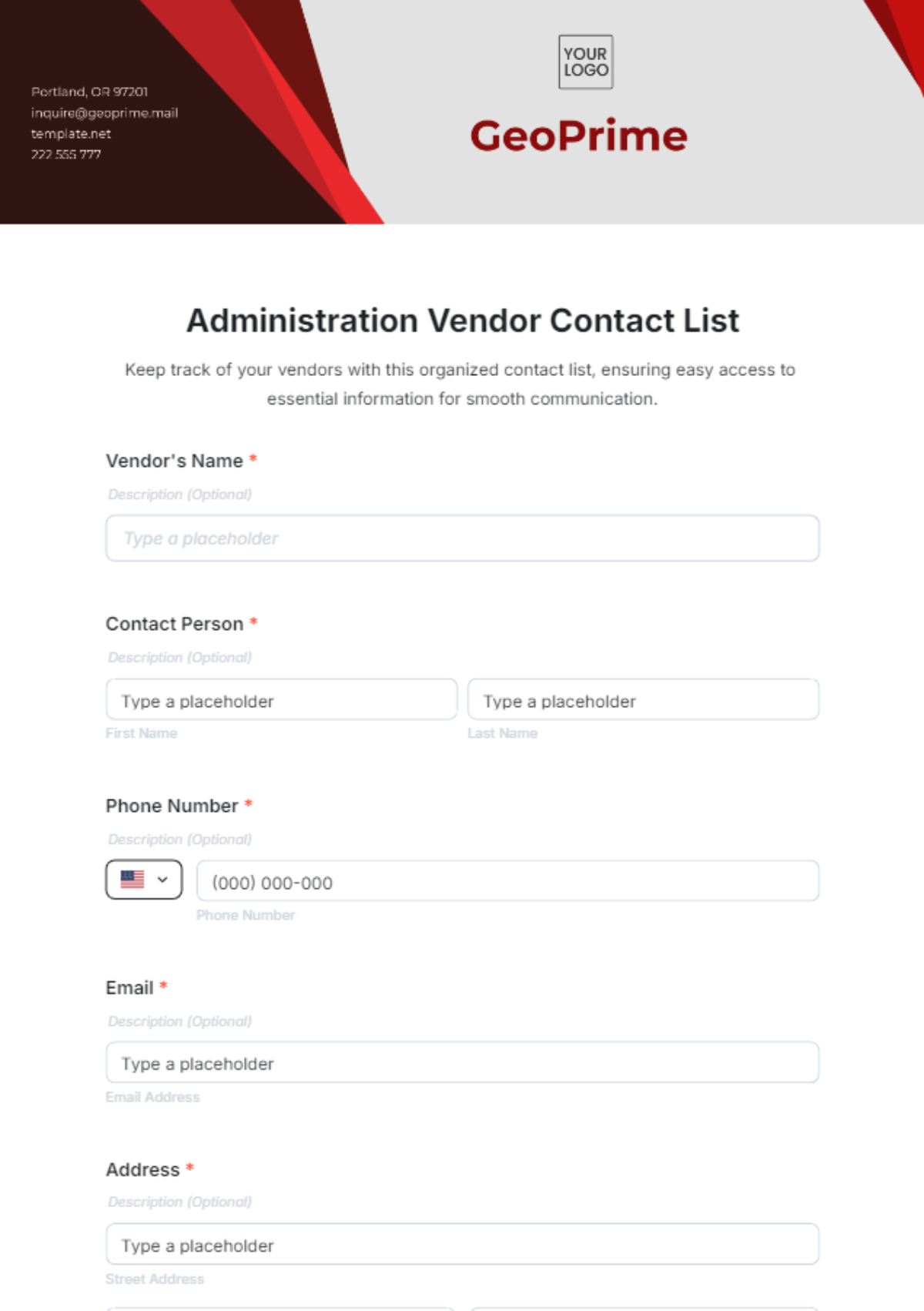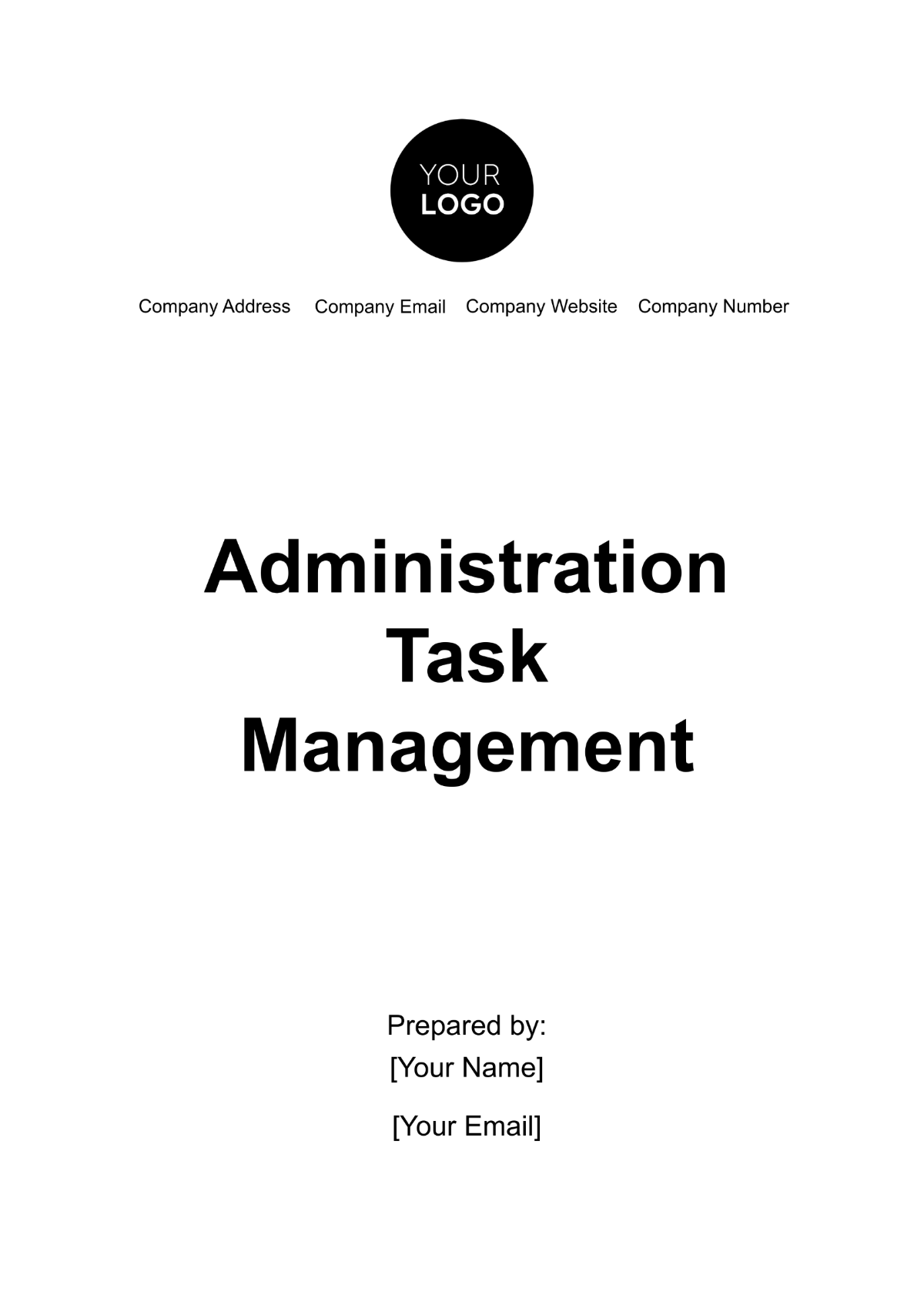Administration Office Protocol
[Your Company Name]
Effective Date: January 1, 2050
1. Introduction
1.1 Purpose of the Administration Office Protocol
The purpose of the Administration Office Protocol is to establish a comprehensive set of guidelines, procedures, and best practices for the administration office of [Your Company Name]. This document is designed to ensure the efficient and effective management of administrative tasks, promote consistency in office operations, and maintain a professional work environment. The protocol will cover all aspects of administration, including communication procedures, document management, office etiquette, safety protocols, and technology usage.
1.2 Scope of the Protocol
This protocol applies to all employees, contractors, and visitors within the administration office of [Your Company Name]. It outlines the expectations for daily operations, interaction with other departments, and the handling of sensitive information. The scope of this document extends to all administrative processes and procedures that are critical to the smooth operation of the office, and it must be adhered to by all personnel to ensure compliance with company policies and to uphold the highest standards of professionalism.
2. Office Hours and Attendance
2.1 Office Hours
The administration office of [Your Company Name] will operate from 8:00 AM to 5:00 PM, Monday through Friday. All employees are expected to adhere to these hours unless otherwise authorized by their supervisor. The office hours are established to ensure that administrative services are available to support the operational needs of the company during standard business hours. In cases where extended or altered hours are necessary, employees will be notified in advance.
2.2 Attendance and Punctuality
Employees are required to be punctual and maintain regular attendance. Consistent attendance is crucial for the effective functioning of the administration office. Employees must arrive at work on time and be prepared to begin their duties at the start of their scheduled shift. In the event of an anticipated absence or tardiness, employees are required to notify their supervisor as soon as possible. Chronic tardiness or absenteeism may result in disciplinary action, up to and including termination.
2.3 Breaks and Lunch Periods
Employees are entitled to a one-hour lunch break and two 15-minute breaks during the workday. Breaks should be taken at times that do not disrupt office operations. Employees should notify their supervisor or a designated colleague when taking breaks to ensure coverage of their duties. The scheduling of breaks should be coordinated to maintain office efficiency and ensure that essential tasks are covered at all times.
3. Communication Protocol
3.1 Internal Communication
Effective internal communication is essential for the smooth operation of the administration office. All employees are expected to use the company’s communication tools, such as email, instant messaging, and internal phone systems, in a professional and efficient manner. Emails should be clear, concise, and relevant to the recipient’s needs. Employees should use the appropriate subject line, address the recipient professionally, and include their signature with contact information.
3.1.1 Email Etiquette
Subject Lines: Use clear and descriptive subject lines to ensure that the recipient understands the purpose of the email.
Response Time: Respond to emails within 24 hours during the business week. If additional time is required to provide a comprehensive response, acknowledge receipt and provide an estimated time frame for your response.
Confidentiality: Handle sensitive information with care. Use encryption when sending confidential information via email and avoid discussing such matters in non-secure environments.
3.2 External Communication
When communicating with clients, vendors, or other external parties, employees must adhere to professional standards that reflect positively on [Your Company Name]. All external communications, including emails, phone calls, and written correspondence, must be clear, professional, and courteous.
3.2.1 Phone Etiquette
Answering Calls: Answer all incoming calls within three rings. Introduce yourself and the company clearly.
Taking Messages: Record messages accurately, including the caller’s name, contact information, and the purpose of the call. Relay messages to the intended recipient promptly.
Out-of-Office Replies: Set up an out-of-office reply for emails and voicemail when you are unavailable, including information on when you will return and who to contact in your absence.
3.3 Meetings
Meetings are a critical component of effective communication and decision-making within the administration office. Employees are expected to attend scheduled meetings punctually and come prepared to discuss the agenda items.
3.3.1 Scheduling Meetings
Advance Notice: Schedule meetings at least 48 hours in advance. Ensure that all participants are notified and that the meeting is added to their calendars.
Agenda: Distribute the meeting agenda at least 24 hours before the meeting. Agendas should include the meeting objectives, topics for discussion, and any pre-meeting materials that need to be reviewed.
Minutes: Assign a person to take minutes during the meeting. Minutes should be distributed to all attendees within 24 hours of the meeting’s conclusion.
4. Document Management
4.1 Document Creation and Formatting
All documents created within the administration office must adhere to [Your Company Name]’s formatting and branding guidelines. This ensures consistency across all company communications and upholds the professional image of the organization.
4.1.1 Standard Formatting Guidelines
Font: Use the company-approved font, which is Arial, size 12, for all documents.
Margins: Set margins to 1 inch on all sides.
Spacing: Use single spacing within paragraphs and double spacing between paragraphs.
Headers and Footers: Include the document title in the header and the page number in the footer.
4.2 Document Storage and Security
Proper storage and security of documents are critical to maintaining the integrity and confidentiality of company information. All documents must be stored in the appropriate digital or physical filing systems.
4.2.1 Digital Document Storage
File Naming Conventions: Use standardized file naming conventions that include the date, document type, and a brief description (e.g., “2050-01-01_MeetingMinutes_Q1Planning”).
Access Control: Store documents in secure, access-controlled locations, such as company-approved cloud storage or internal servers. Only authorized personnel should have access to sensitive documents.
Backup Procedures: Regularly back up digital documents to prevent data loss. Backups should be performed daily, with copies stored in a secure off-site location.
4.2.2 Physical Document Storage
Filing System: Organize physical documents in a systematic and accessible manner using labeled file cabinets. Sensitive documents should be stored in locked cabinets.
Archiving: Archive outdated or inactive documents in a secure storage area. Archiving should be done annually, with a log of all archived documents maintained.
Document Disposal: Shred or securely dispose of physical documents that are no longer needed, particularly those containing sensitive information.
5. Office Etiquette
5.1 Professional Conduct
Employees of [Your Company Name] are expected to maintain a professional demeanor at all times. This includes dressing appropriately for the workplace, treating colleagues and clients with respect, and upholding the company’s values in all interactions.
5.1.1 Dress Code
Business Attire: Employees should adhere to the business attire dress code unless otherwise specified (e.g., casual Fridays). Business attire includes suits, dresses, slacks, and blouses that are professional and appropriate for the workplace.
Casual Days: On designated casual days, employees may wear business casual attire, such as khakis, polo shirts, and blouses. Casual attire should still be neat, clean, and appropriate for a professional environment.
Special Occasions: For company events, client meetings, or other special occasions, employees should dress according to the event’s requirements, which may include formal or themed attire.
5.2 Interpersonal Relationships
Positive interpersonal relationships contribute to a collaborative and harmonious workplace. Employees should strive to build and maintain positive relationships with colleagues through open communication, teamwork, and mutual respect.
5.2.1 Conflict Resolution
Addressing Issues: Employees are encouraged to address conflicts or disagreements with colleagues directly and professionally. If a resolution cannot be reached, the matter should be escalated to a supervisor or HR representative.
Mediation: In cases where conflicts cannot be resolved through direct communication, a neutral third party, such as an HR representative, may be brought in to mediate and facilitate a resolution.
Documentation: All conflict resolution efforts should be documented, including the steps taken to resolve the issue and the final outcome.
6. Safety Protocols
6.1 Emergency Procedures
The safety of employees and visitors is a top priority for [Your Company Name]. All employees must be familiar with and adhere to the company’s emergency procedures to ensure a safe working environment.
6.1.1 Fire Safety
Evacuation Routes: Employees must familiarize themselves with the building’s evacuation routes and exits. Evacuation maps should be posted in visible locations throughout the office.
Fire Drills: Participate in scheduled fire drills to practice the evacuation procedure. Fire drills will be conducted twice a year to ensure preparedness.
Fire Extinguishers: Know the location of fire extinguishers and how to use them. Only attempt to use a fire extinguisher if the fire is small and you are trained to do so.
6.2 Workplace Ergonomics
Ergonomics is essential for maintaining employee health and productivity. [Your Company Name] is committed to providing an ergonomic workplace that minimizes the risk of injury and promotes comfort.
6.2.1 Ergonomic Workstations
Chair and Desk Setup: Adjust chairs and desks to ensure proper posture. The chair should support the lower back and allow the feet to rest flat on the floor or on a footrest. The desk height should enable the elbows to be at a 90-degree angle while typing.
Monitor Placement: Position monitors at eye level, about an arm’s length away, to reduce eye strain. Monitors should be adjusted to avoid glare from windows or lighting.
Keyboard and Mouse Position: Place the keyboard and mouse at a height that allows the arms to be relaxed and the wrists to remain in a neutral position. Use ergonomic accessories if needed to support proper hand positioning.
6.2.2 Breaks and Stretching
Scheduled Breaks: Take regular breaks to stand, stretch, and walk around. This helps reduce the risk of repetitive strain injuries and maintains overall health.
Stretching Exercises: Incorporate simple stretching exercises into the daily routine to relieve muscle tension and improve circulation. Stretching should focus on the neck, shoulders, back, and wrists.
6.3 Health and Wellness
[Your Company Name] supports the health and wellness of its employees through various initiatives and resources. Maintaining a healthy work environment contributes to overall job satisfaction and productivity.
6.3.1 Wellness Programs
Health Screenings: Offer periodic health screenings to monitor employee health and provide early detection of potential health issues. Screenings may include blood pressure checks, cholesterol tests, and glucose monitoring.
Fitness Programs: Provide access to fitness programs, such as gym memberships or on-site exercise classes. Encourage employees to participate in regular physical activity to maintain their health.
Mental Health Support: Offer resources for mental health support, including counseling services, stress management workshops, and mental health days. Encourage open discussions about mental health to reduce stigma and promote well-being.
7. Technology Usage
7.1 IT Equipment and Resources
The proper use of IT equipment and resources is essential for efficient office operations. Employees must adhere to company policies regarding the use of technology and information systems.
7.1.1 Equipment Allocation
Assignment: IT equipment, including computers, printers, and mobile devices, will be assigned to employees based on their job requirements. Employees are responsible for the proper use and care of assigned equipment.
Maintenance: Report any issues or malfunctions with IT equipment to the IT department immediately. Regular maintenance and updates will be scheduled to ensure equipment remains functional and secure.
7.1.2 Software and Applications
Approved Software: Use only company-approved software and applications for work-related tasks. Unauthorized software installations or modifications are prohibited.
Updates and Patches: Keep all software up to date with the latest security patches and updates. The IT department will manage system updates and notify employees of any required actions.
7.2 Data Security and Privacy
Protecting sensitive information and maintaining data security is a critical responsibility for all employees. Adherence to data security protocols is essential to prevent unauthorized access and data breaches.
7.2.1 Access Control
Password Management: Use strong, unique passwords for all systems and applications. Passwords should be changed regularly and should not be shared with others.
Access Rights: Ensure that access to sensitive information is granted only to authorized personnel. Request access rights through formal channels and ensure proper documentation is maintained.
7.2.2 Data Handling
Confidential Information: Handle all confidential information with care. Store sensitive data in secure locations and use encryption when transmitting data electronically.
Data Disposal: Dispose of obsolete or unnecessary data according to company policies. Shred physical documents and use secure data deletion methods for electronic records.
8. Compliance and Reporting
8.1 Compliance with Company Policies
All employees are required to comply with [Your Company Name]’s policies and procedures as outlined in this protocol. Non-compliance may result in disciplinary action and impact the overall effectiveness of the administration office.
8.1.1 Policy Adherence
Training: Participate in required training sessions related to company policies and procedures. Training will be provided periodically to ensure all employees are aware of updates and changes.
Monitoring: Compliance will be monitored through regular audits and performance reviews. Employees should be proactive in seeking clarification on any policy-related questions.
8.2 Reporting Issues and Concerns
Employees are encouraged to report any issues or concerns related to office operations, safety, or compliance. Reporting mechanisms are in place to address problems promptly and effectively.
8.2.1 Reporting Procedures
Anonymous Reporting: Use anonymous reporting tools if desired to report issues without revealing personal identity. Ensure that reports are detailed and provide sufficient information for investigation.
Follow-Up: After reporting an issue, follow up with the appropriate department to ensure that the matter is being addressed. Document all communications related to the reported issue.
9. Training and Development
9.1 Onboarding and Orientation
New employees will undergo a comprehensive onboarding and orientation process to familiarize them with the administration office’s protocols, procedures, and culture.
9.1.1 Onboarding Process
Welcome Session: Attend a welcome session to introduce new hires to the company’s mission, values, and administrative procedures. The session will cover key protocols, office layout, and introduction to team members.
Training Modules: Complete required training modules on office systems, document management, and communication protocols. Training will include hands-on practice and assessments to ensure understanding.
9.2 Ongoing Professional Development
[Your Company Name] supports the ongoing professional development of its employees to enhance their skills and advance their careers. Regular development opportunities will be provided to support continuous learning and growth.
9.2.1 Training Opportunities
Workshops and Seminars: Participate in workshops and seminars related to administrative skills, technology updates, and professional development. Training opportunities will be offered both in-house and through external providers.
Certification Programs: Pursue certification programs relevant to administrative functions and career advancement. [Your Company Name] may offer financial support or reimbursement for approved certification programs.
10. Policy Review and Updates
10.1 Periodic Review
The Administration Office Protocol will be reviewed periodically to ensure its relevance and effectiveness. Updates will be made as necessary to reflect changes in company policies, technology, and industry standards.
10.1.1 Review Schedule
Annual Review: Conduct an annual review of the protocol to assess its effectiveness and identify areas for improvement. The review will be performed by a designated committee or team.
Feedback Collection: Solicit feedback from employees regarding the protocol’s implementation and any challenges encountered. Use feedback to make informed updates and improvements.
10.2 Document Updates
Any updates or revisions to the Administration Office Protocol will be communicated to all employees. Updated versions of the protocol will be distributed and made accessible to ensure that everyone is aware of the changes.
10.2.1 Communication of Updates
Notification: Notify employees of any changes to the protocol via email, internal announcements, or team meetings. Provide a summary of the changes and their impact.
Access to Updated Protocol: Ensure that updated versions of the protocol are available through the company’s internal documentation system or intranet. Employees should review the updated protocol to stay informed.
11. Conclusion
11.1 Summary
The Administration Office Protocol for [Your Company Name] outlines the essential procedures and best practices necessary for the effective and professional management of administrative tasks. Adhering to these protocols will contribute to a productive and positive work environment, ensure compliance with company policies, and support the overall success of the organization.
11.2 Acknowledgment
All employees are required to acknowledge receipt and understanding of the Administration Office Protocol. An acknowledgment form will be provided to confirm that employees have read and agree to adhere to the outlined procedures.
Effective Date: January 1, 2050

Employee Name:
Position:
Date:

